
Vasul cu inscripția „Decebalus per Scorilo”
În 1954, cercetările sistematice conduse de Constantin Daicoviciu pe platoul cu șase terase din așezarea civilă de la Vest de Sarmizegetusa Regia, au condus la descoperirea de către arheologul I.H. Crișan a unui fragment ceramic cu ștampila DECEBALVS și un al doilea, cu ștampila PER SCORILO.
.EN - In 1954, systematic research led by Constantin Daicoviciu on the six-terraced plateau in the western settlement of Sarmizegetusa Regia led to the discovery by archaeologist I.H. Crişan of a ceramic fragment with the DECEBALVS stamp and a second, with the stamp PER SCORILO.

Plan de încadrare în zonă
În anul următor au fost scoase din pămînt mai multe fragmente, care erau prinse între rădăcinile unui fag, și s-a constatat că aparțin unui vas de mari dimensiuni. Au existat patru seturi a cîte două ștampile aplicate simetric, sub buza vasului, compunînd inscripția DECEBALVS PER SCORILO. (sursa text: Aurora Petan)
.EN - The next year a number of fragments were pulled from the ground, which were caught between the roots of a beech, and were found to belong to a large vessel. There were four sets of two stamps applied symmetrically below the bow of the vessel, composing the DECEBALVS PER SCORILO inscription. (source text: Aurora Petan)
Releveu Clădire rotundă
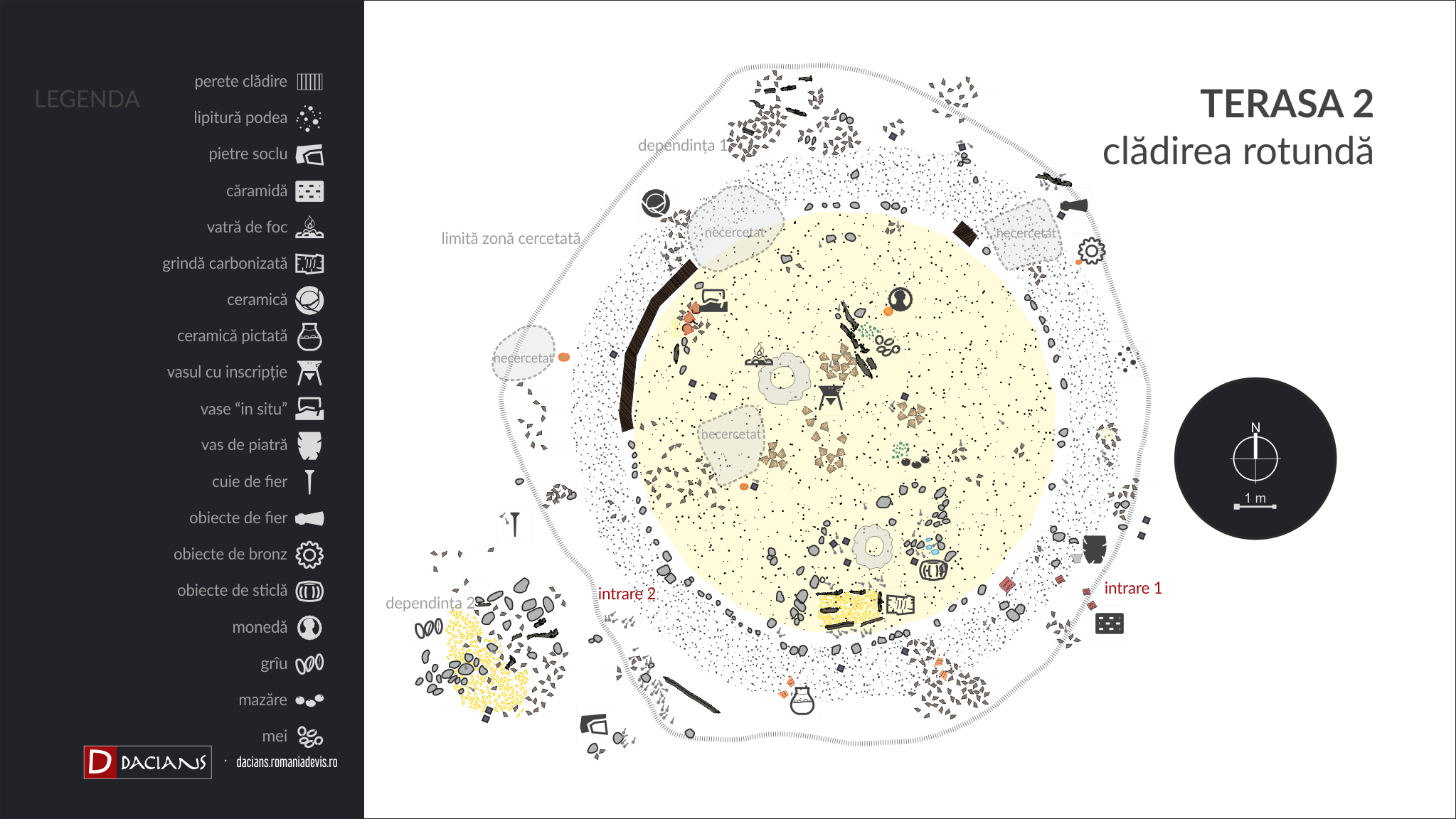
Vasul care poartă această inscripție este unul cu totul ieșit din comun. Avea forma unei pîlnii și a fost lucrat la roată, din lut roșiatic. Dimensiunile sale (raportate la forma ciudată a vasului) sunt impresionante: înălțimea 75 cm, diametrul gurii 125 cm, iar cel al fundului de doar 6 cm (cifrele variază puțin de la un autor la altul). Buza îngroșată a fost străpunsă de patru perforații, situate față în față două cîte două, care sugerează, spun specialiștii, că vasul era suspendat. (sursa text: Aurora Petan)
.EN - The vessel that carries this inscription is one entirely out of the ordinary. It was shaped like a hut, and it was made of reddish clay. Its dimensions (related to the strange shape of the vessel) are impressive: 75 cm high, 125 cm mouth diameter, and the bottom one 6 cm (figures vary slightly from one author to another). The thick lip was pierced by four perforations, facing two to two, suggesting, say the specialists, that the vessel was suspended. (source text: Aurora Petan)

Reconstituire 3D virtuală (ipotetic și o structură de susținere a vasului)

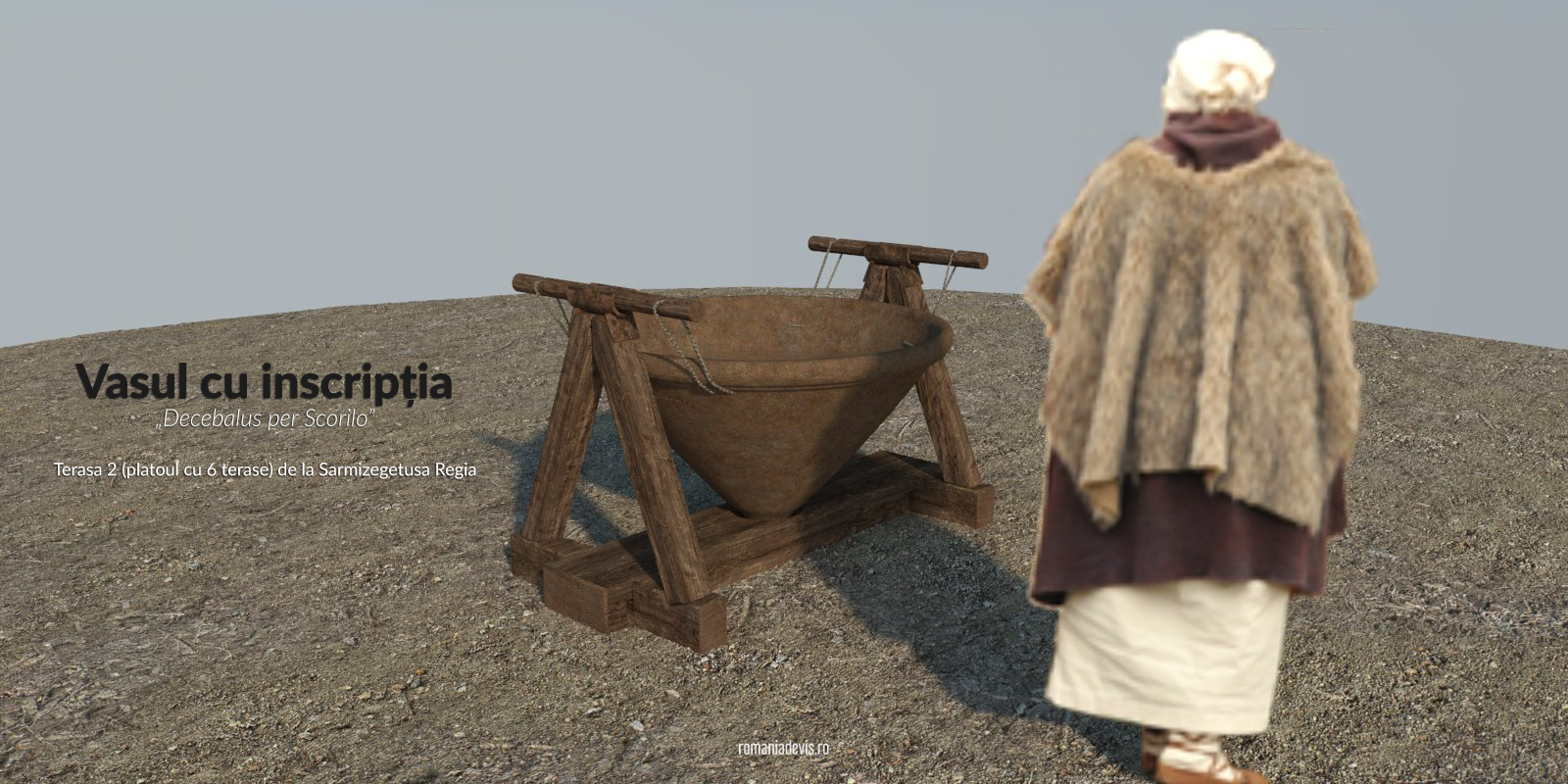
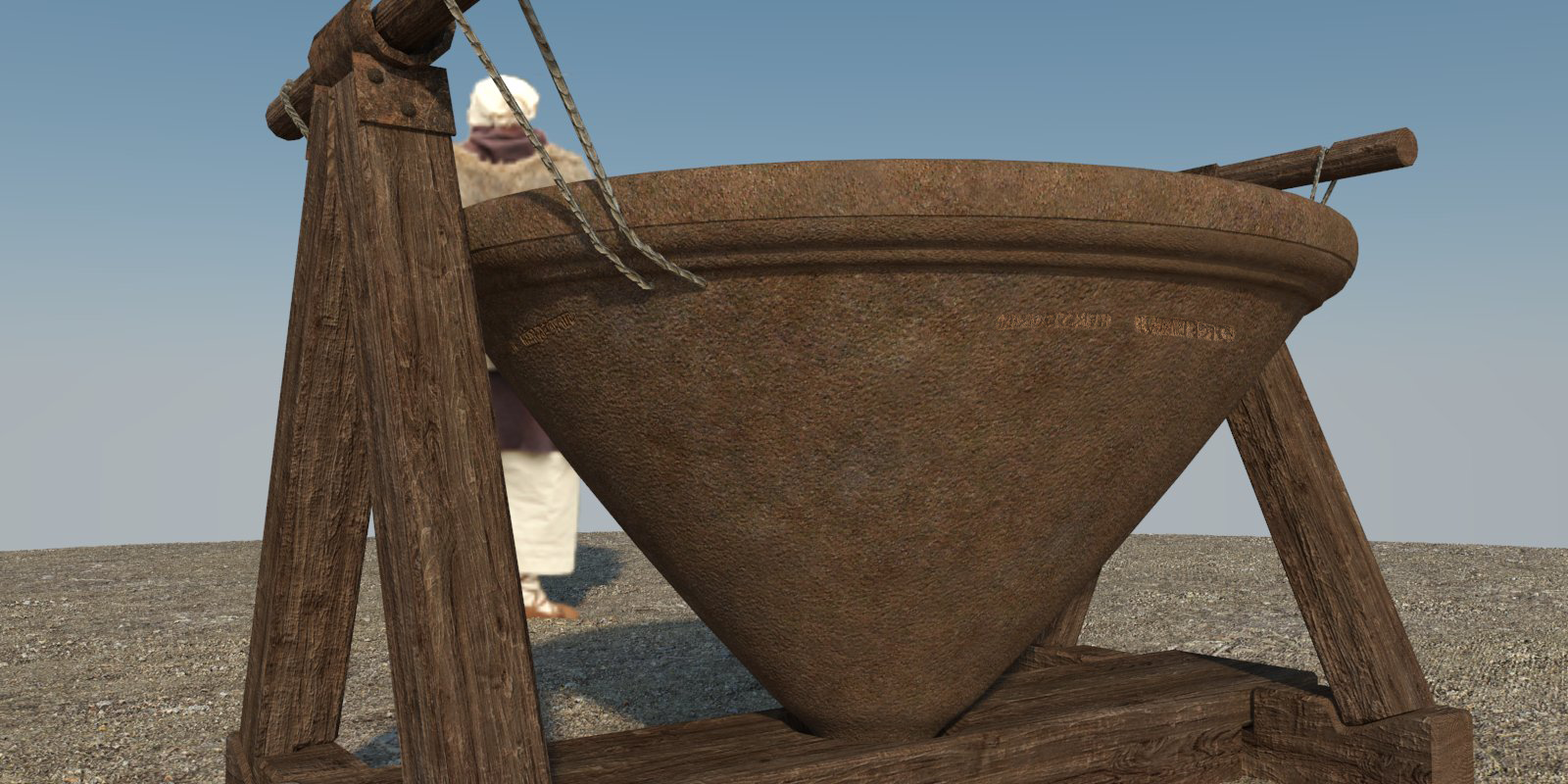
Secțiune 3D virtuală prin vas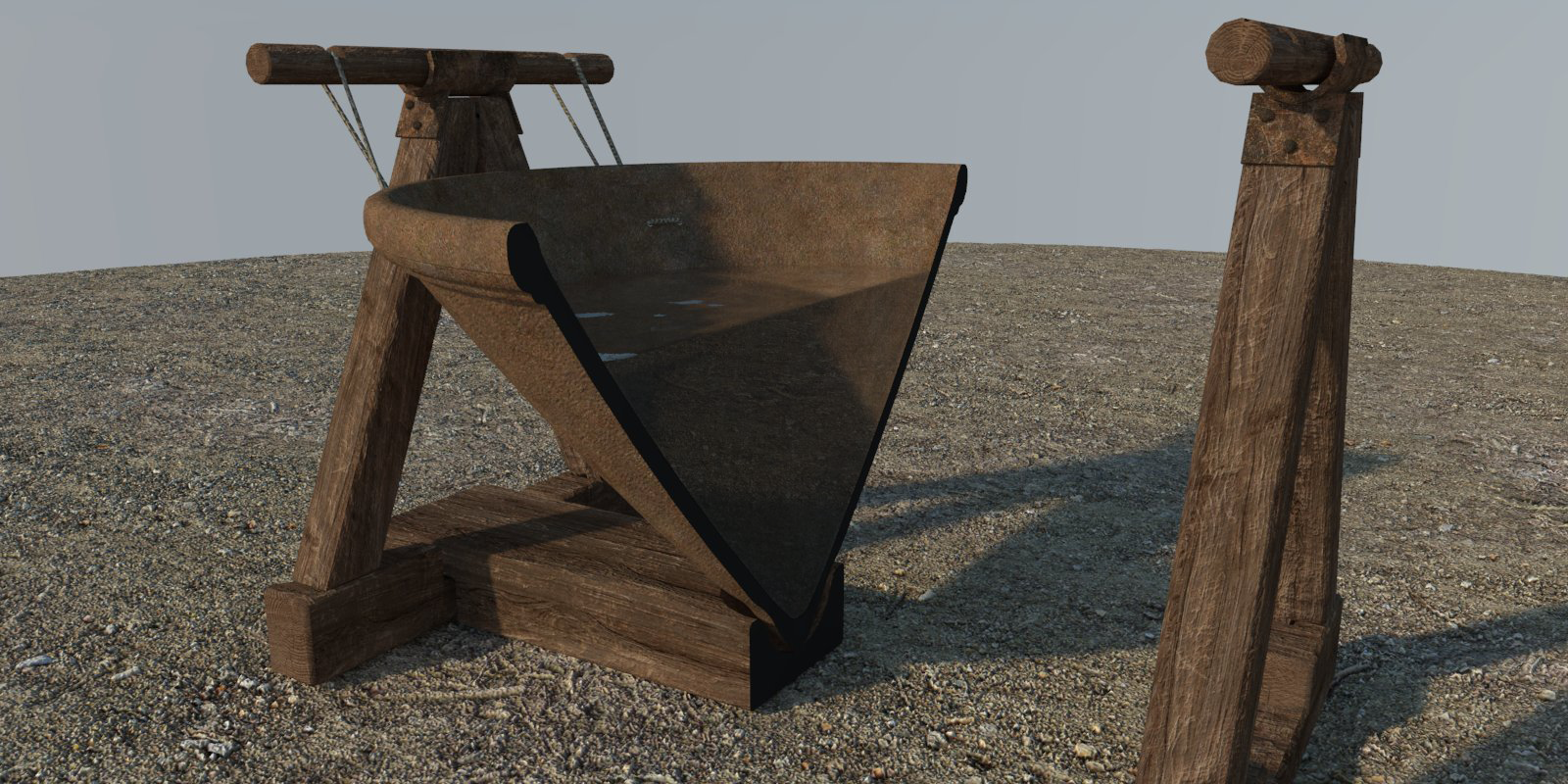
O replică 1:1 expusă la Muzeul Militar Național din București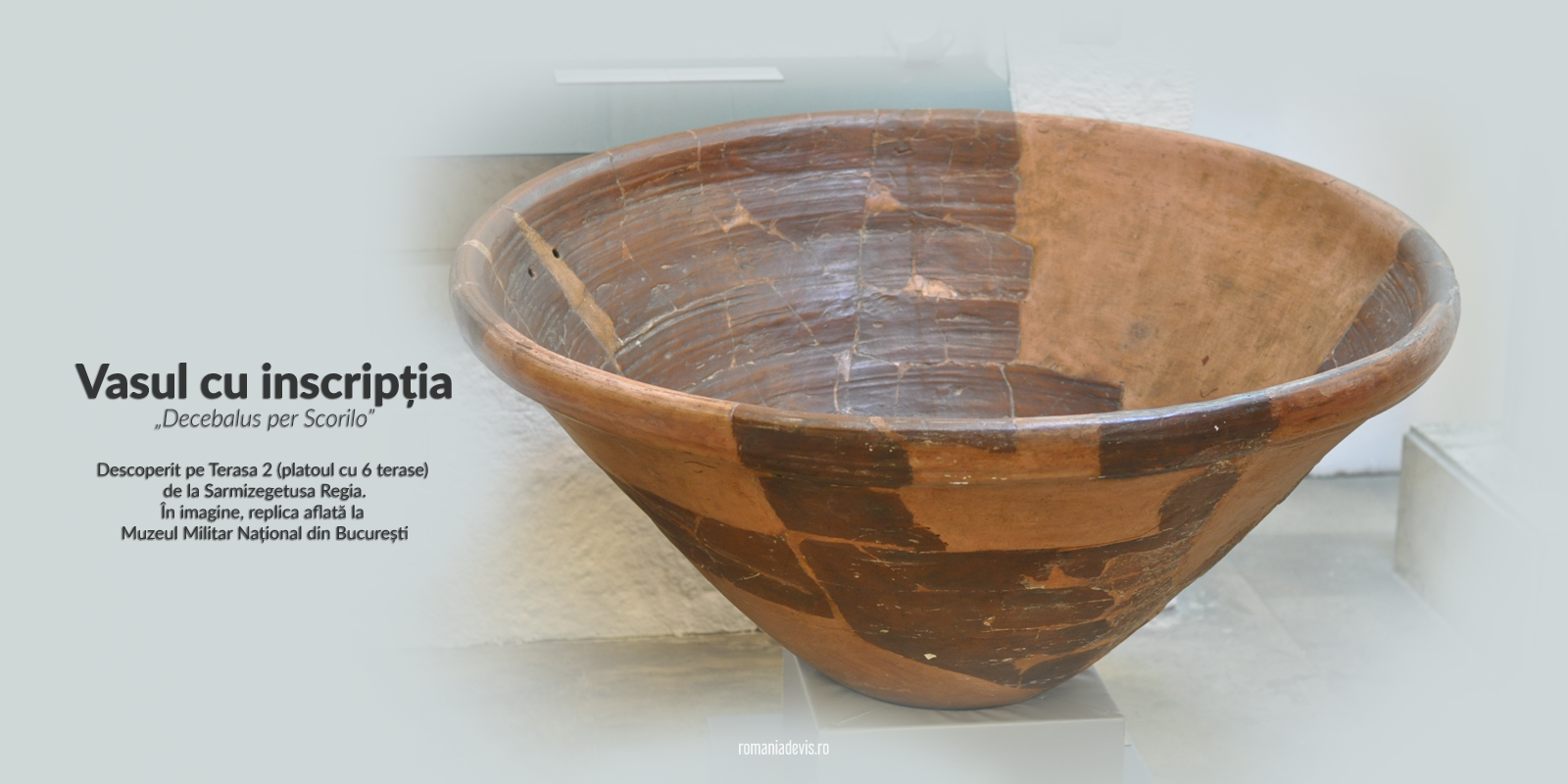
--
RECONSTITUIRE 3D virtuală ipotetică
a Clădirii rotunde de pe Terasa 2 de la Sarmizegetusa Regia
(click pe poza!)
--
CC BY-SA 4.0 - This is a Free Culture License!


{{ 'Comments (%count%)' | trans {count:count} }}
{{ 'Comments are closed.' | trans }}